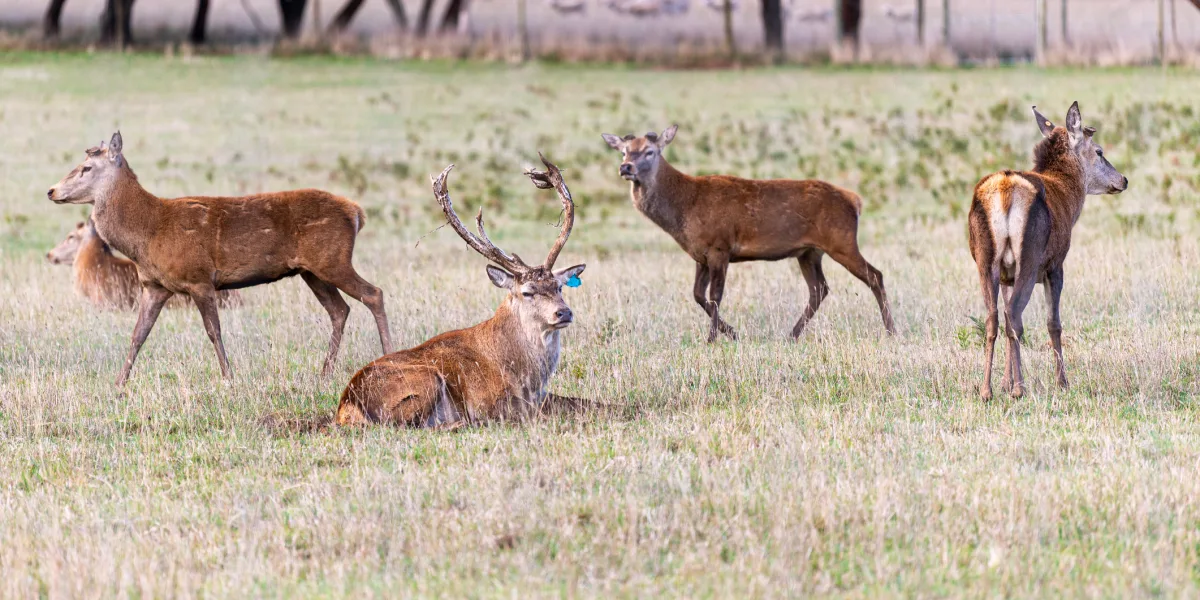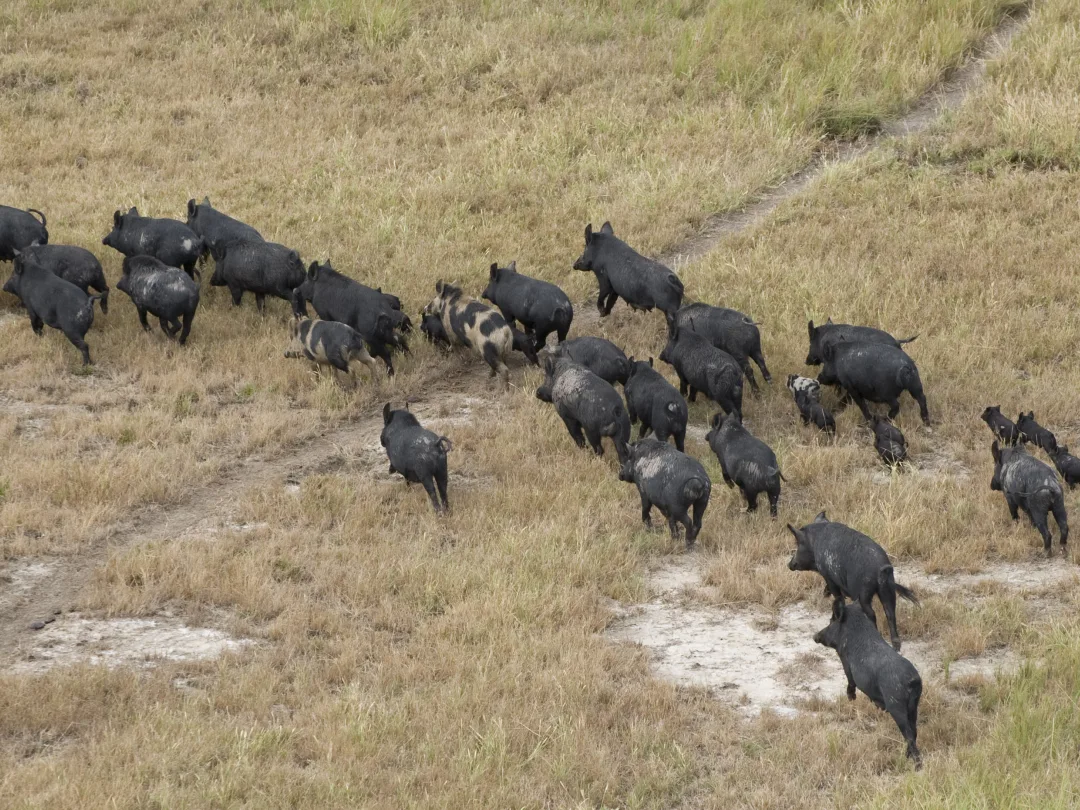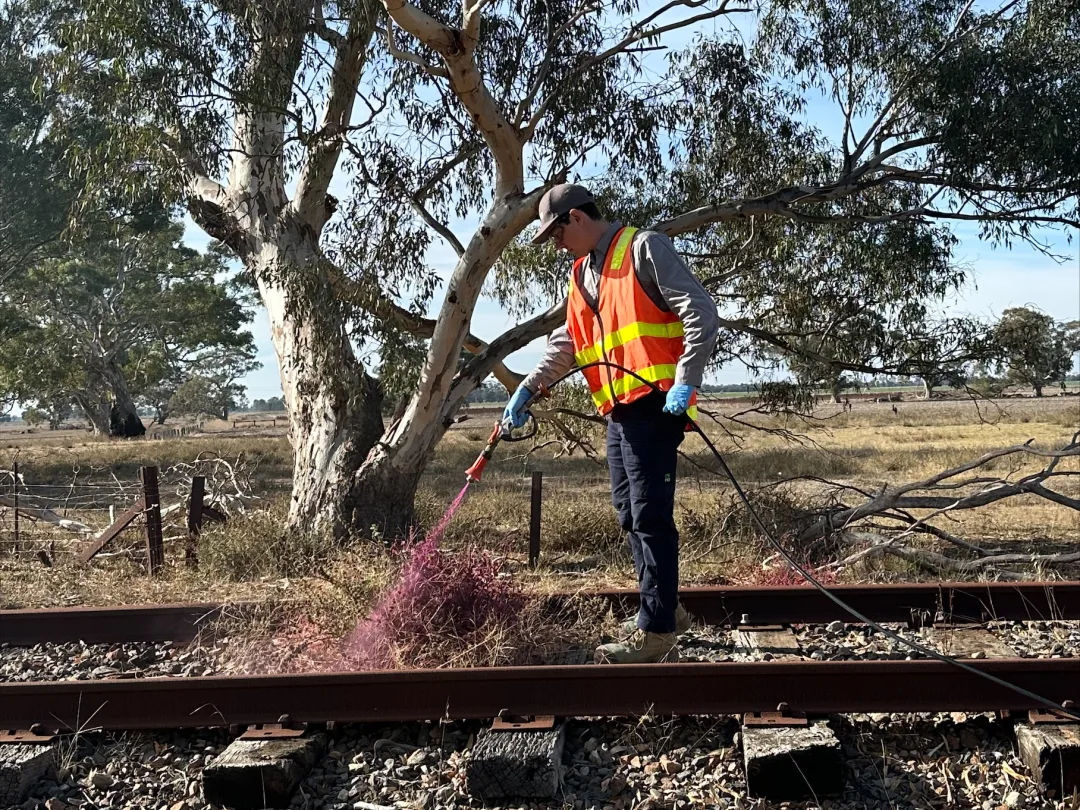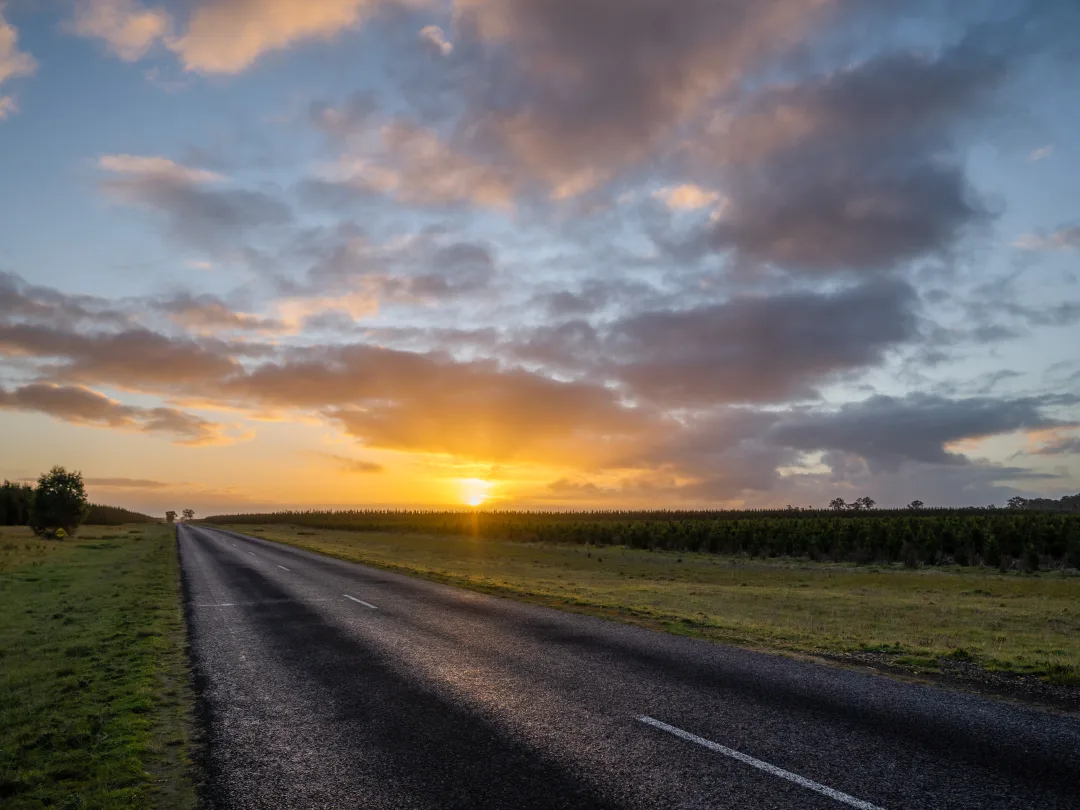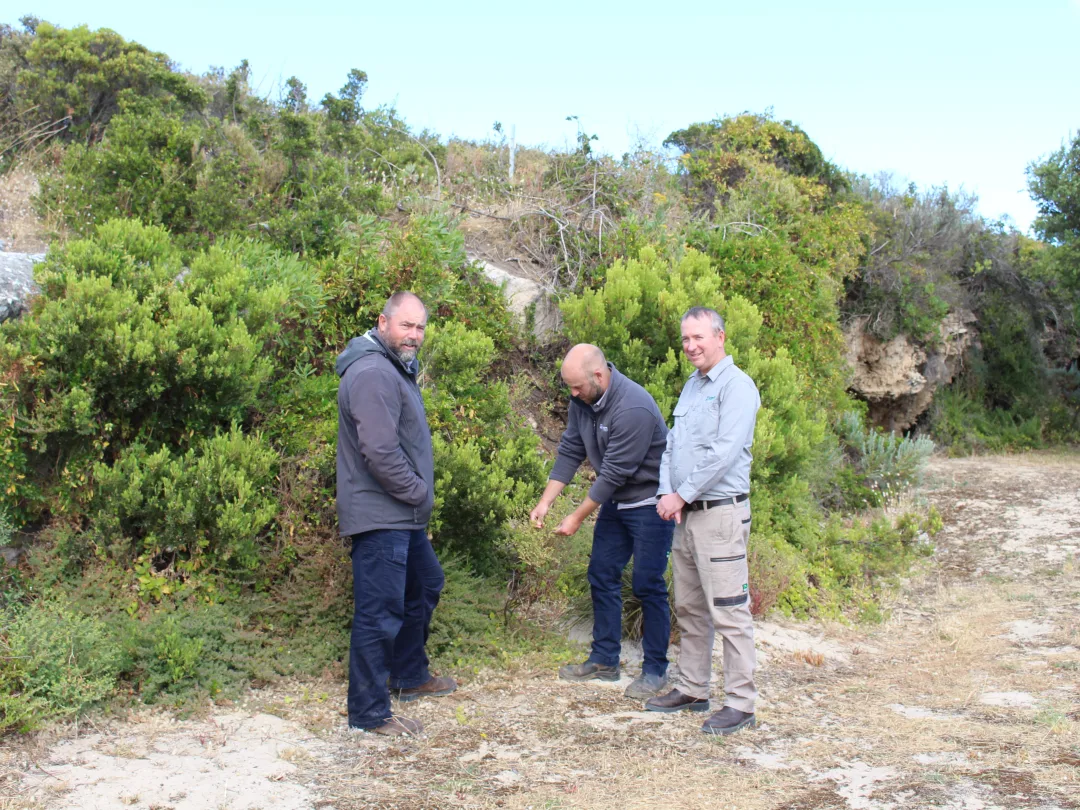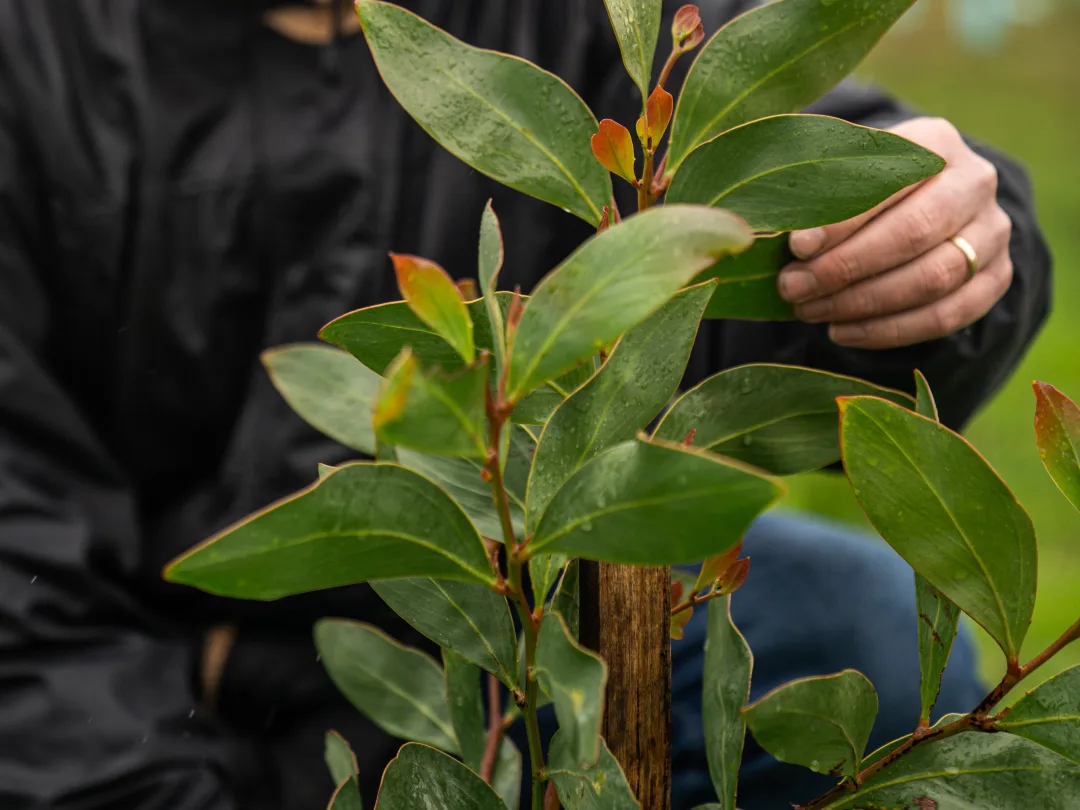Keeping your farmed or domestic deer tagged and contained
Our local Landscape Officers are here to support you in maintaining fencing and ear tag compliance of your farmed or domestic deer. They can guide you on your responsibilities.
Ensuring compliance in regard to fencing and ear tagging is just one of the tools we use to protect the region from feral deer. It helps to reduce the impact escaped deer cause to our environment and agricultural industries. Escaped deer also undermine efforts of the community to eradicate feral deer.
Through our Feral Deer Eradication Program, the Limestone Coast Landscape Board is working hard to protect our region from the impacts of feral deer. One part of the Feral Deer Eradication Program is helping you understand your obligations for tagging and containing farmed deer.
Understanding your responsibilities for keeping deer
Farmed or domestic deer must be registered with the Department of Primary Industries and Regions (PIRSA) under a Property Identification Code (PIC). If you keep, sell or move deer they must be registered on your PIC.
This includes deer that are:
- kept as pets
- on hobby farms
- located in wildlife parks, petting zoos/farms, other non-commercial operations
- in commercial operations including for meat or velvet production
- kept for hunting purposes.
Detailed information on keeping deer can be found on the PIRSA website which includes the South Australian Deer Policy 2019.
The Gazetted Notice of Control Measures outlines several responsibilities for all properties with farmed or domestic deer:
- The deer must be kept within enclosures with boundary fencing (including any gates) constructed and maintained at all times to a standard to prevent escape. Fencing and gates must take into account the local terrain.
- Any extensions, replacements or alterations made to the fencing after the date of 20 August 2020 must comply with the specifications set out in the Gazetted Notice of Control.
- All deer over 12 months of age kept on the land, and all deer of any age being moved from the land, must carry a permanent ear tag which has an identification number linked to the deer keeper’s PIC.
Find out more about keeping farmed deer (PIRSA)
Read the Gazetted Notice of Control Measures [PDF, 66.8 KB]
Preventing and reporting farmed deer escapes
A key way to protect our region from feral deer impacts is to stop farmed or domestic deer from escaping and adding to the feral deer population.
Immediately upon becoming aware of an escape of deer kept on your land, the owner of the land must:
- Inspect and repair any damage to, or means of escape from, the deer enclosure fences.
- Report the escape of deer to the Limestone Coast Landscape Board and provide detail as to the number and type of escaped deer, the date, time, location and cause of the escape (to the best of their knowledge).
Any escaped tagged farmed or domestic can be reported to the Limestone Coast Landscape Board through the below options:
Report escaped deer online
Escaped farmed or domestic deer notification form [PDF, 169 KB]
Tips to help you manage deer escapees:
- Save contact details for your local Landscape Board to report escapes.
- Exchange contact details with neighbouring landholders to allow notification if deer escape or if fence maintenance issues occur.
Meeting the tagging requirements for farmed and domestic deer protects them from being considered as feral and immediately destroyed. If tagged farmed or domestic deer are reported escaped there is a period of 7 days to allow the tagged deer owner to retrieve them. They cannot be captured or destroyed by anyone else for a period of 7 days after the Limestone Coast Landscape Board has been notified of the escape.
Fencing your deer farm
Fencing standards are in place to not only ensure boundary fences are constructed, but also maintained to prevent escape of deer. If you keep deer you have a legal responsibility to ensure they are contained.
Our role is to work with you ensure your deer fences are complaint and built to the appropriate standards. Our local Landscape Officers regularly inspect deer fences for compliance and to identify faults. Landscape Officers will then work with you on the process to fix faults and achieve compliance.
There are different deer fencing standards depending on whether you built your deer fence before or after 1 February 2019.
Fences built after 1 February 2019
For deer fences built after 1 February 2019, there are strict standards on the height, construction and style of your deer fence. Boundary fences (including gates) must be constructed:
- To a minimum height of 1.9 m from the ground on either side of the fence.
- Using pre-fabricated deer mesh attached securely to poles that are a maximum of 8 m apart.
- With a bottom wire (high tensile, barbed or not barbed) that runs through staples on posts. It must be able to be tightened as needed and attached to the prefabricated deer mesh as low as practical, but no more than 50 mm above the ground.
- With a strainer wire at the top of the fence, attached to the prefabricated deer mesh.
- With posts (including gates) in a state of good repair in accordance with these specifications, free from any gaps, holes or damage; and are kept free from fallen trees or branches.
Further information about the deer farm fencing requirements and standards can be found from the Department of Primary Industries and Regions SA (PIRSA).
Read more about Deer farm fencing (PIRSA)
Fences built prior to 1 February 2019
For deer fences built prior to 1 February 2019, deer must be kept within enclosures with boundary fencing (including any gates) constructed and maintained at all times to a standard sufficient to prevent the escape of any deer. Fencing and gates should take into account the particular terrain. Further information can be found in the Deer Industry Association of Australia’s, Deer Farming Handbook.
Read the Deer Industry Association of Australia’s Deer Farming Handbook [PDF, 507 KB]
Tips to prevent recurring deer fencing issues:
- Destroy all feral deer outside of your fenced enclosures. During breeding season, feral and farmed or domestic deer can fight through fences damaging them.
- Align fences away from areas that could damage or compromise your fence. This includes wetlands, drains, native vegetation or areas heavily populated by native animals such as wombats that can burrow under fences.
- Manage farmed or domestic deer stocking rates or supplementary feed. Farmed or domestic deer can put extreme pressure on and damage fencing to escape if pasture, crops or supplementary feed is not adequate within the enclosure.
- Regularly inspect boundary fences for damage, especially after significant weather events.
- Stock suitable amounts of spare fencing materials for immediate repairs.
Tagging of farmed deer
All domestic deer over 12 months of age must have a permanent ear tag, which has an identification code linked to a Property Identification Code (PIC).
Under the Livestock Regulations 2013, it is an offence to move or sell farmed or domestic deer not fitted with an ear tag bearing the PIC of the land from which they are moved.
Ear tagging your deer can provide a number of benefits to their management, including:
- Easily distinguishing your farmed or domestic deer from feral deer.
- Providing your tagged deer with up to 7 days protection from being culled if it escapes.
Tips to help with ear tagging:
- The ear tag should be appropriate for the species of deer.
- The tag must be clearly visible from a distance and be of an appropriate quality.
- Tags with your Property Identification Code and/or identification codes can be bought from rural merchandise stores.
- Commercial deer farms routinely tag deer and may provide advice on handling facilities or offer on-ground support.
Local Landscape Officers, local knowledge
We have a responsibility to ensure feral deer are effectively managed across the region. This is guided by the Limestone Coast Pest Plant and Animal Strategy.
Our local Landscape Officers are spread across the Limestone Coast. They work with you to by providing:
- advice on deer fencing requirements
- advice on deer tagging requirements
- help to coordinate tagged deer movement with your neighbours.
To find the farmed deer advice to suit your needs contact your local Landscape Officer by calling 08 8429 7550 or find your local Landscape Officer.
Find your local Landscape Officer
Read the Pest Plant and Animal Strategy [PDF, 1 MB]
Supporting you to keep deer through the Feral Deer Eradication Program
Through the Feral Deer Eradication Program we are eradicating feral deer from the Limestone Coast. Feral Deer are deer that are not kept in captivity. In South Australia feral deer cannot be moved, sold, kept or released.
Eradication of feral deer outside of farmed or domestic deer enclosures supports you by:
- Preventing animals fighting through fences, such as males during the rut, and damaging fences. This reduces maintenance issues and improves fence integrity.
- Reducing the game meat harvesting supply which helps demand for farmed venison from deer farmers.
- Preventing feral deer incursions into domestic deer enclosures and transfer of undesirable genetics from feral animals breeding with domestic animals.
- Improving farm biosecurity and reducing the potential for wild to farmed disease transfer.
- Improving farm security and safety as feral deer attract illegal activities such as trespasses for illegal hunting.
Learn more or join the free Feral Deer Eradication Program today
Recording feral deer activity in DeerScan
DeerScan is a free resource for the general public, farmers, local councils, community groups, pest controllers and biosecurity organisations. You can use DeerScan to record feral deer sightings, report feral deer impacts, and document control action.
Information you enter can alert local biosecurity authorities and your community about feral deer activity and can help to protect domestic animals and native wildlife from feral deer activity.
Visit DeerScan
